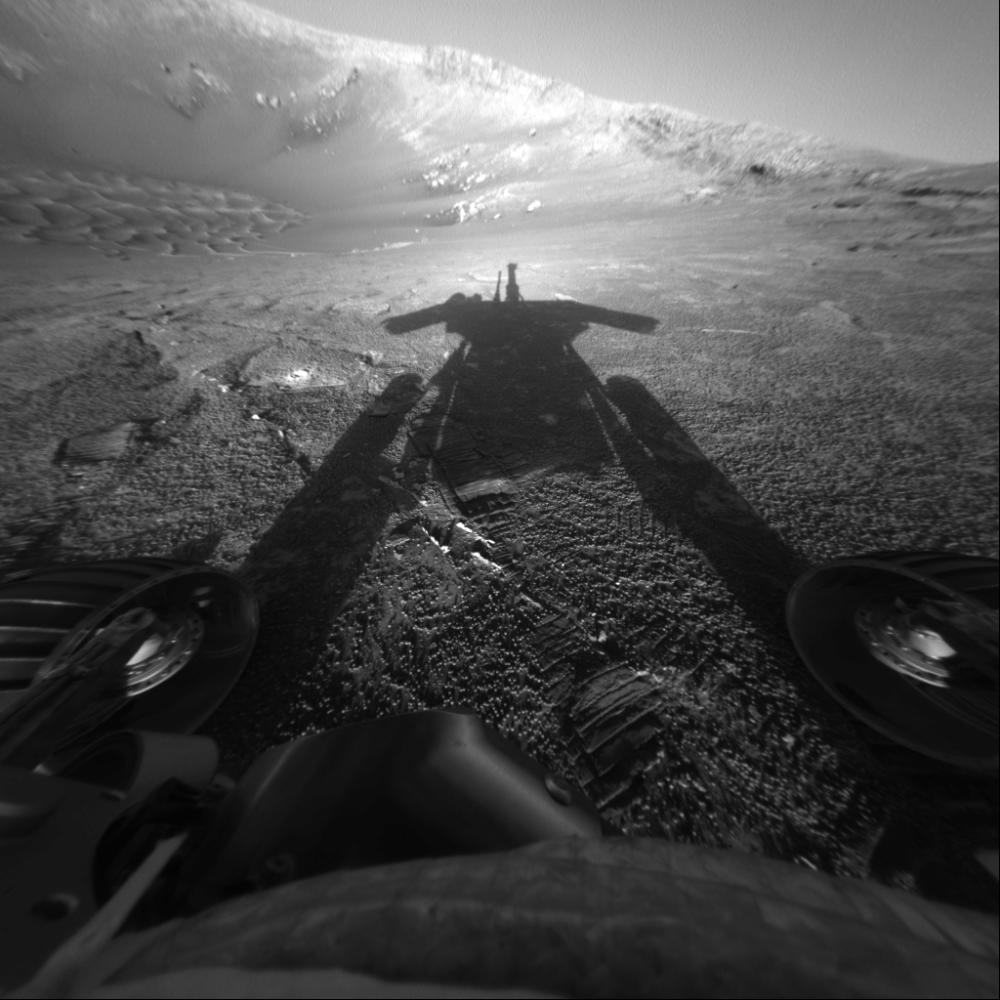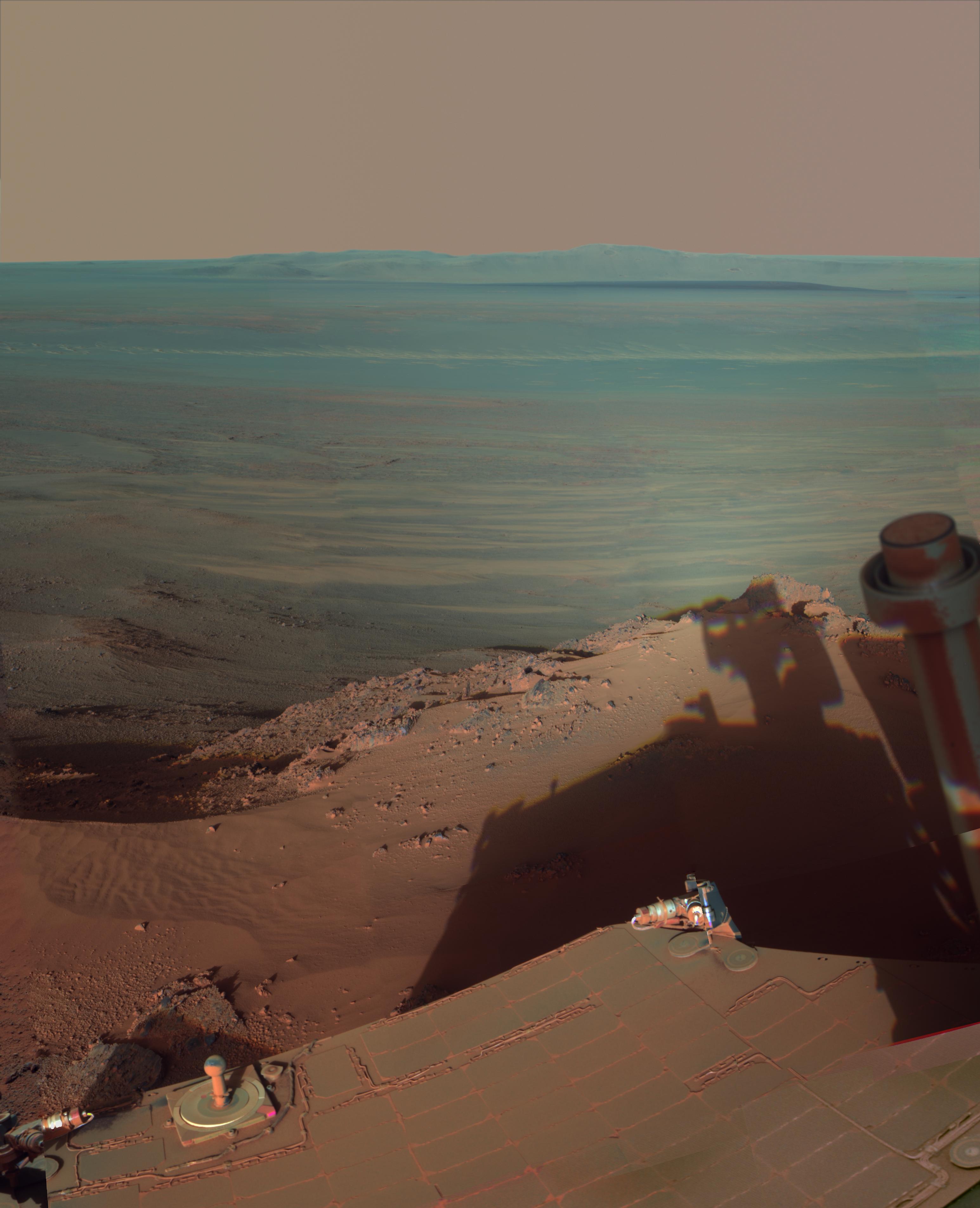
NASA's Opportunity Rover: A Decade of Mars Exploration (Op-Ed)

John L. Callas of NASA's Jet Propulsion Laboratory is project manager for the space agency's Mars Exploration Rover mission, which landed the twin Spirit and Opportunity rovers on the Red Planet in January 2004. (Spirit touched down on Jan. 3 and Opportunity landed on Jan. 24, Pacific Time.) He contributed this article to SPACE.com's Expert Voices: Op-Ed & Insights.
No one ever expected this to happen. That after 10 years, a Mars Exploration Rover would continue to operate on the surface of Mars — well beyond its original 90-day mission. This was not in anyone's wildest imagination, to have a rover to continue to function, and continue to function productively and in good health.
How could this be? We can assert that unexpected wind gusts blew the dust off the solar arrays to maintain rover power. We can claim that operational skill permitted the rovers to survive the cold, dark Martian winters. We can pride ourselves that we built exquisite roving machines. All of these are true. But does that really explain this unimagined longevity and the tremendous scientific success? Whatever the explanation, this is a grand accomplishment. [10 Amazing Mars Discoveries by Rovers Spirit & Opportunity]
Since the landings of Spirit and Opportunity in January 2004, we, as a species, have maintained an active presence — continuous, sustained exploration — on the Martian surface for 10 years. We now begin the second decade of that continuous exploration. Is this the first decade of what will be humankind's continuous presence on Mars?
The accomplishments of the Mars Exploration Rovers are impressive. Each has established ancient habitable environments where liquid water — with a neutral pH in places — persisted over geologic timescales. Clues for ancient water have been found over much of the rovers' traverse. This implies an earlier Mars that was Earth-like with at least kilometer-scale bodies of water, warmer temperatures and a thicker atmosphere. And, with hydrothermal energy sources found in some locations, these discoveries suggest a habitable environment on Mars at a time when life first emerged on Earth.
Amazingly, in spite of these discoveries, in spite of the years of operation, in spite of the tens of kilometers distances, in spite of the hundreds of thousands of images, there is still much exploration ahead. Although time has marched forward, one rover, Opportunity, has gone backward in time, back to the earliest epoch on Mars, back to when Mars was warm and wet, and habitable. This period, the Noachian epoch, is the period to study. This is where we may find clues as to whether Mars once supported life. So, Opportunity has a "bucket list" of things to do and get done while we still have this magnificent, capable machine with us.

This has not been easy. This exploration has been one of the hardest things humankind can do. It takes an amazing team to deal with the challenges these rovers have faced. But this accomplishment demonstrates what motivated, highly skilled, dedicated people can do. It speaks to the resourcefulness and ingenuity of human beings. It speaks to our nature as explorers.
Get the Space.com Newsletter
Breaking space news, the latest updates on rocket launches, skywatching events and more!
In reality, these rovers were never designed for the exploration they have conducted. They were designed for one kilometer of odometry, operation during Martian summer and only 90 days of duration. But in fact, these rovers crossed great plains, climbed distant hills and descended into deep craters and survived cold, dark winters and planet-circling dust storms. And yet with these challenges and adversity, these machines kept exploring and kept discovering. [Latest Mars Photos from Spirit and Opportunity]
But with all this success, there have been setbacks, as there always are. Components and actuators have stopped working. Spirit's right front wheel failed after two years. Opportunity''s robotic arm has become arthritic. There have been very hard days when dust storms hit or a rover became embedded. We eventually had to say goodbye to Spirit after many years of productive exploration. And in time, we have had to say good-bye to some of our Earth-bound colleagues, dear friends, reminding us that we are all mortal, and that our machines, very much like us, are mortal, too.
In addition to the great scientific discoveries, these rovers also give us a great intangible, something else, something special. We have come to love these rovers; all of us have. We have invested them with human qualities. They are accomplished, dutiful, intelligent, intrepid, playful and so darn cute! They carry to this alien world our dreams, our hopes and our highest aspirations. They carry us along to these great, unknown places.

Over this past decade, through these rovers, our species has gone to work on Mars. So, in addition to being Earthlings, because of these rovers, we have become Martians, too — dual citizens, if you will. We now live in a larger world, a world that extends beyond our home planet. These rovers have made Mars our neighborhood, our backyard. And now, a generation has grown up with these rovers and been inspired by them. And some of these rover children work on Mars today. So, for people all over the world, the rovers' story has become their story.
Ten years ago, our species landed upon an alien world, tasked with a 90-day exploration of the unknown and the search for habitable worlds. We observe a great moment in that mission — the achievement of 10 years of continuous operation and exploration of the surface of Mars. And, of course, we wonder how long this remarkable mission can continue. But in a larger sense, we cannot fully capture all that these roving missions have accomplished. These two rovers will forever change our view of our solar system and ourselves. It is for us to continue the great task of exploration. From this celebrated success, we remind ourselves of that undertaking. That discovery and exploration of our universe shall advance far beyond the Earth.
The views expressed are those of the author and do not necessarily reflect the views of the publisher. Follow us @Spacedotcom, Facebook and Google+. This article was originally published on SPACE.com.

Join our Space Forums to keep talking space on the latest missions, night sky and more! And if you have a news tip, correction or comment, let us know at: community@space.com.









